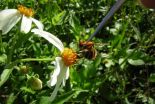(Press-News.org) Two innovative programs designed to improve the availability of emerging medical technologies that can help patients receive more effective, efficient and personalized health care are advanced in a commentary written by a team of scientists and policy experts, including seven from Arizona State University, and published today in Science Translational Medicine.
The March 13 article, "Regulatory and Reimbursement Innovation," explores the benefits of coverage with evidence development (CED) and parallel review for the regulation and reimbursement of molecular diagnostics. Molecular diagnostics include tests that aid in better prediction, diagnosis, prognosis and treatment of disease through the use of DNA, RNA and proteins.
The U.S. Food and Drug Administration (FDA) requires certain diagnostic tests to provide reasonable assurances of safety and effectiveness before they can be marketed. The Centers for Medicare and Medicaid Services (CMS) determines whether such products are "reasonable and necessary" before they can be covered by Medicare. The FDA and CMS currently are reviewing CED and parallel review for more widespread use, according to the article.
One of the co-authors, ASU Regents' Professor Gary Marchant, Faculty Director of the Center for Law, Science & Innovation (LSI) at ASU's Sandra Day O'Connor College of Law, said these tests are expected to improve health outcomes by giving providers optimal treatment choices for their patients.
"It's a new paradigm of health care," said Marchant, who founded LSI's Program on Personalized Medicine, Law & Policy, the nation's first law-school program that fosters the discipline's study through collaborative, multidisciplinary evaluation of critical issues. "And it's a critical time for both of these innovative programs, because agencies of the federal government are actively considering expanding them.
"These tests produce complex algorithms that can help your physician direct your health care, where you should go for treatment and what medications can – and cannot – help you," he said. "People are dying unnecessarily, and we need to get these diagnostics out more quickly and with better data."
Regulatory and reimbursement roadblocks hinder the tests' development and slow their integration into routine care decisions, according to lead author, LSI Research Director Rachel Lindor. A graduate of the law school's J.D. program who is now completing her M.D. degree at Mayo Medical School, Lindor began researching these issues during an externship in 2011 at the U.S. Department of Health and Human Services.
An LSI-hosted workshop in April 2012, "Potential Solutions to Regulatory and Reimbursement Barrier for Molecular Diagnostics: Parallel Review and Coverage with Evidence Development," followed. It drew notable experts from government, industry and academia to brainstorm solutions to these barriers; their input led to the now-published article.
"Overall, the group seemed to agree that both of these policies were good in theory, but there were pieces of each that made people skeptical they would actually work," Lindor said. "We came up with a few changes at the workshop that we thought would make them more attractive for developers who may have products coming up through the pipeline."
Parallel review enables developers to meet with both CMS and FDA early in a product's review process, in order to clarify the agencies' evidentiary expectations and reduce inefficiencies. CED allows CMS to temporarily cover new products not yet supported by sufficient evidence to meet its "reasonable and necessary" coverage threshold while additional data are evaluated.
"Our recommendations on CED focused on trying to streamline the process so developers wouldn't see it as a hurdle to getting paid for their products – things like smoothing out the way that FDA and CMS work together when they review the same product and shortening the time it takes for CMS to actually start a CED," Lindor explained. "The group was also concerned about CMS' hints that CED may be used by local Medicare contractors, so one of our recommendations was that CMS provide some more logistics on how exactly that would work."
Lindor said tweaks to the parallel review program could make it more amenable to diagnostic test developers and speed the tests' access to insurers, care providers and patients.
"Our group recommended that CMS give developers some assurance that there will be some benefits to participating, which could be done by shortening the time it takes to go through the process, or by providing more flexibility about what type of payment decisions would come from the review," Lindor said. "We also recommended that the policy be made available to a broader range of products than it's open to now."
Dr. Denis Cortese, Director of ASU's Health Care Delivery and Policy Program, and a co-author of the article, said "The primary goals of these two programmatic recommendations are to more quickly and accurately determine the appropriate role for new medical technologies in medical practice and patient care."
Another co-author, Dr. George Poste, Chief Scientist of ASU's Complex Adaptive Systems Initiative, said molecular diagnostics have enormous potential to increase diagnostic accuracy and increase the efficacy and safety of drugs in multiple diseases.
"Current ambiguities in regulation and reimbursement policies for these new tests are a major barrier to corporate investment and R&D innovation," Poste said.
###
Other co-authors of the paper are ASU Regents' Professor of Law and Psychology Michael Saks; Lee Cheatham, Deputy Director, ASU Biodesign Institute; Vincent Pizziconi, Associate Professor, ASU School of Biological and Health Systems Engineering; Scott Allocco, Co-founder and Director, BioMarker Strategies; Ralph Hall, Professor of Practice, University of Minnesota Law School; William Mangold Jr., Noridian Administrative Services; Bruce Quinn, Senior Health Policy Advisor, Foley Hoag; Mollie Roth, Chief Operating Officer, Diaceutics; E. Robert Wassman, Metadiagnostics, and Raymond Woosley, Founder, AZCERT.
ASU scholars advocate innovation in regulatory, payment pathways for personalized medicine
2013-03-14
ELSE PRESS RELEASES FROM THIS DATE:
EASL calls on UK to tackle alcohol consumption problem through implementation of minimum pricing
2013-03-14
Geneva, 13th March 2013 --- According to WHO, liver cirrhosis accounts for 1.8% (i.e. 170,000) of all deaths in Europe. In recent years liver cirrhosis has become a serious health threat in some Western European countries such as Ireland and the United Kingdom, where over the last 10 years the associated mortality has increased .
The European Association for the Study of the Liver (EASL) urges the UK government to press ahead with its proposed implementation of the minimum unit pricing of alcohol. EASL's most recent publication The burden of liver disease in Europe: ...
Study: Probiotics reduce stress-induced intestinal flare-ups
2013-03-14
ANN ARBOR, Mich. – For those with irritable bowel syndrome who wonder if stress aggravates their intestinal disorder, a new University of Michigan Health System study shows it's not all in their head.
Researchers revealed that while stress does not cause IBS, it does alter brain-gut interactions and induces the intestinal inflammation that often leads to severe or chronic belly pain, loss of appetite and diarrhea.
Stress has a way of suppressing an important component called an inflammasome which is needed to maintain normal gut microbiota, but probiotics reversed ...
Oh mother, where art thou?
2013-03-14
Biologists since Aristotle have puzzled over the reasons for mass strandings of whales and dolphins, in which groups of up to several hundred individuals drive themselves up onto a beach, apparently intentionally. Recent genetic research has shed some light on whether family relationships play a role in these enigmatic and often fatal beachings of otherwise healthy whales.
One hypothesis regarding the reason for strandings is that "care-giving behavior," mediated largely by family relationships, plays a critical role. In this scenario, the stranding of one or a few whales, ...
Transplanted brain cells in monkeys light up personalized therapy
2013-03-14
MADISON — For the first time, scientists have transplanted neural cells derived from a monkey's skin into its brain and watched the cells develop into several types of mature brain cells, according to the authors of a new study in Cell Reports. After six months, the cells looked entirely normal, and were only detectable because they initially were tagged with a fluorescent protein.
Because the cells were derived from adult cells in each monkey's skin, the experiment is a proof-of-principle for the concept of personalized medicine, where treatments are designed for each ...
Study questions the role of kinship in mass strandings of pilot whales
2013-03-14
NEWPORT, Ore. – Pilot whales that have died in mass strandings in New Zealand and Australia included many unrelated individuals at each event, a new study concludes, challenging a popular assumption that whales follow each other onto the beach and to almost certain death because of familial ties.
Using genetic samples from individuals in large strandings, scientists have determined that both related and unrelated individuals were scattered along the beaches – and that the bodies of mothers and young calves were often separated by large distances.
Results of the study ...
Knowing how brown fat cells develop may help fight obesity
2013-03-14
PHILADELPHIA - Brown fat is a hot topic, pardon the pun. Brown fats cells, as opposed to white fat cells, make heat for the body, and are thought to have evolved to help mammals cope with the cold. But, their role in generating warmth might also be applied to coping with obesity and diabetes.
The lab of Patrick Seale, PhD, at the Perelman School of Medicine, University of Pennsylvania, studies what proteins guide the development, differentiation, and function of fat cells. Seale and postdoctoral fellow Sona Rajakumari, PhD, along with Jun Wu from the Dana-Farber Cancer ...
Social bees mark dangerous flowers with chemical signals
2013-03-14
Scientists already knew that some social bee species warn their conspecifics when detecting the presence of a predator near their hive, which in turn causes an attack response to the possible predator. Researchers at the University of Tours (France) in collaboration with the Experimental Station of Arid Zones of Almeria (Spain) have now demonstrated that they also use chemical signals to mark those flowers where they have previously been attacked.
Researchers at the University of Tours (France) and the Experimental Station of Arid Zones of Almeria (EEZA-CSIC) conducted ...
23andMe identifies multiple genetic factors impacting development of nearsightedness
2013-03-14
Mountain View, Calif. – March 14, 2013 – In the largest ever genome-wide association study on myopia, 23andMe, the leading personal genetics company, identified 20 new genetic associations for myopia, or nearsightedness. The company also replicated two known associations in the study, which was specific to individuals of European ancestry. The study included an analysis of genetic data and survey responses from more than 50,000 23andMe customers and demonstrates that the genetic basis of myopia is complex and affected by multiple genes.
Myopia is the most common eye ...
New early warning system for the brain development of babies published in video journal
2013-03-14
A new research technique, pioneered by Dr. Maria Angela Franceschini, will be published in JoVE (Journal of Visualized Experiments) on March 14th. Researchers at Massachusetts General Hospital and Harvard Medical School have developed a non-invasive optical measurement system to monitor neonatal brain activity via cerebral metabolism and blood flow.
Of the nearly four million children born in the United States each year, 12% are born preterm, 8% are born with low birth weight, and 1-2% of infants are at risk for death associated with respiratory distress. The result ...
CITES makes historic decision to protect sharks and rays
2013-03-14
Bangkok, 14 March 2013. CITES plenary today accepted Committee recommendations to list five species of highly traded sharks under the CITES Appendices, along with those for the listing of both manta rays and one species of sawfish. Japan, backed by Gambia and India, unsuccessfully challenged the Committee decision to list the oceanic whitetip shark, while Grenada and China failed in an attempt to reopen debate on listing three hammerhead species. Colombia, Senegal, Mexico and others took the floor to defend Committee decisions to list sharks.
"We are thrilled with this ...



